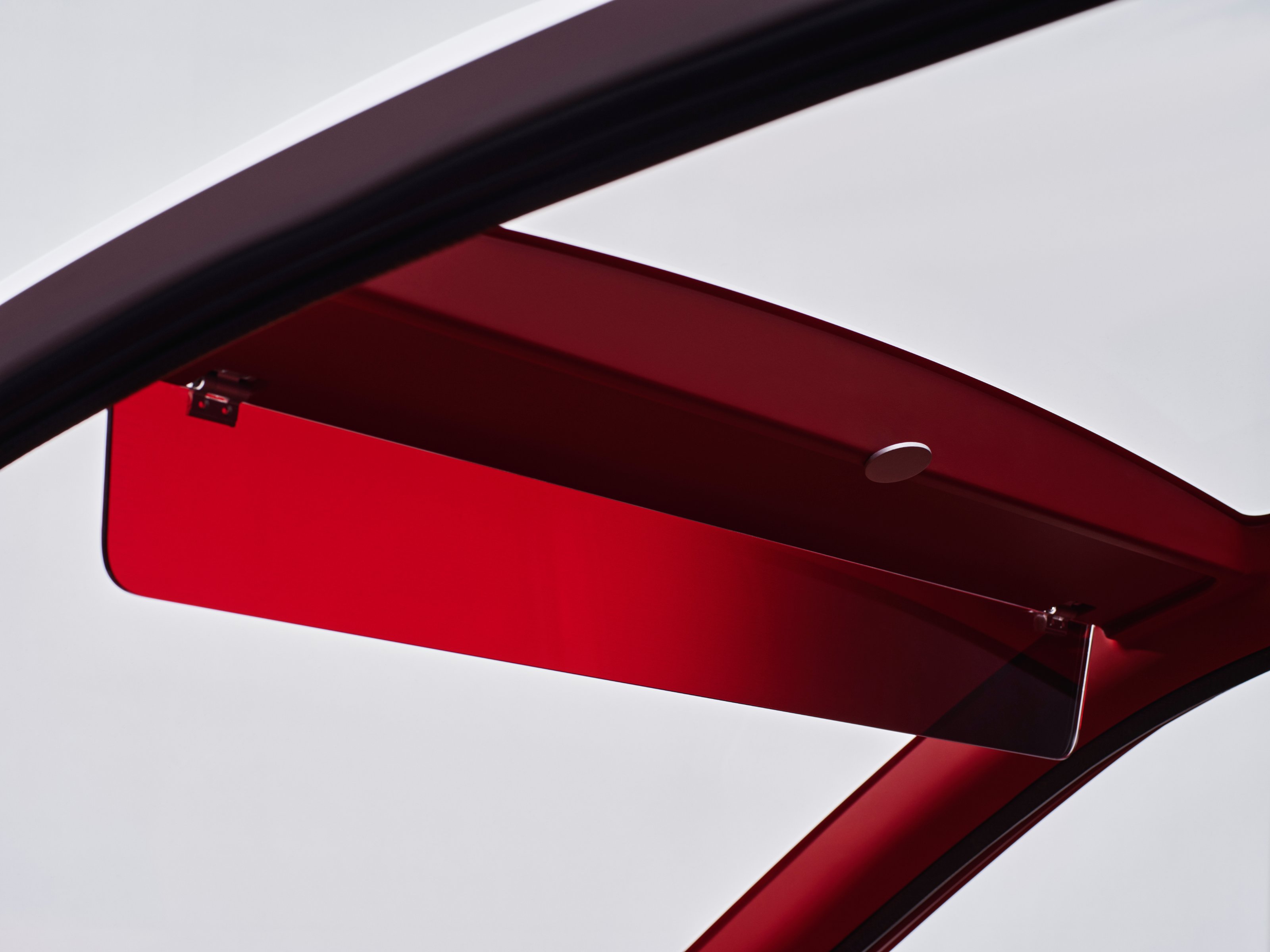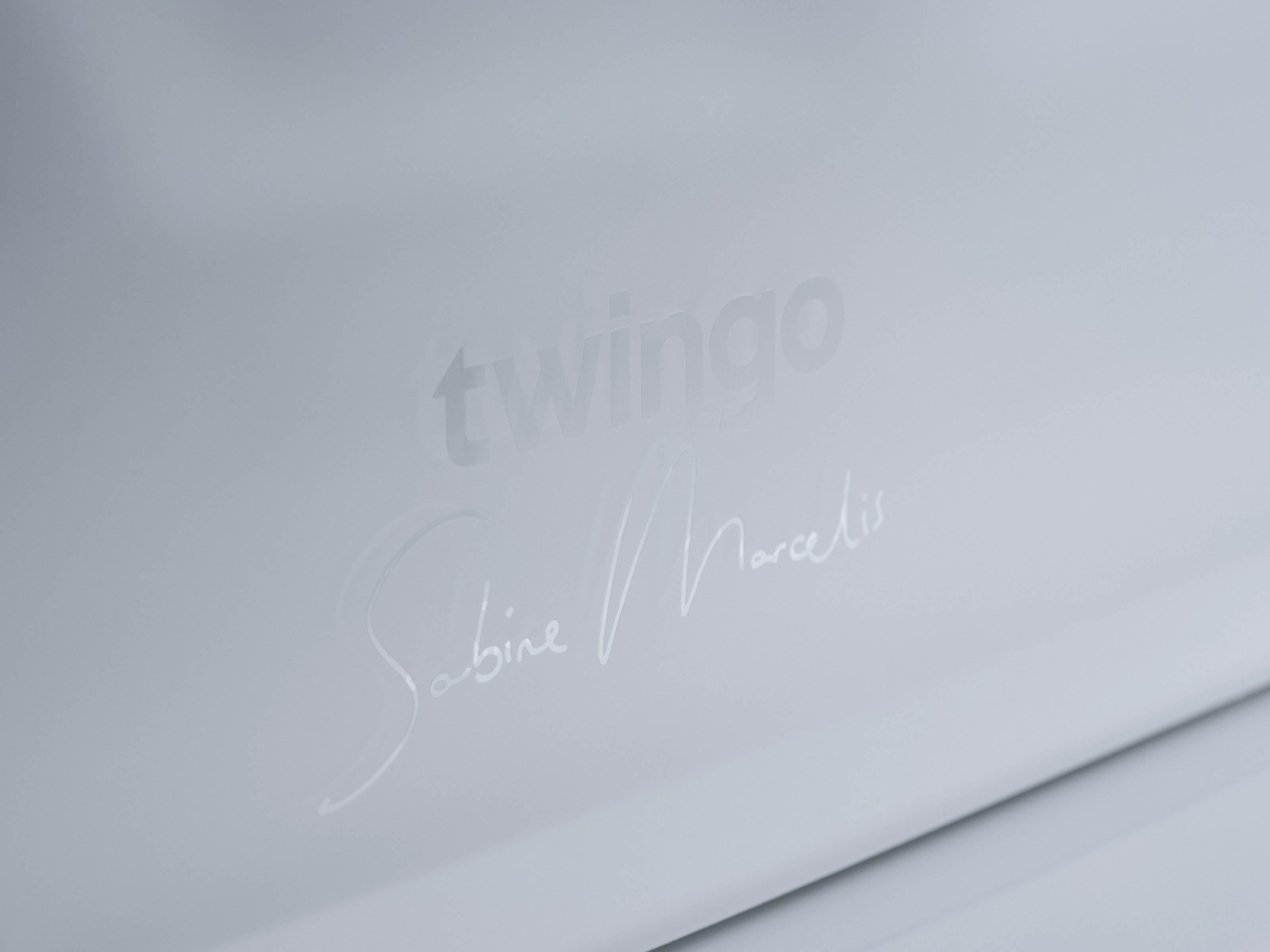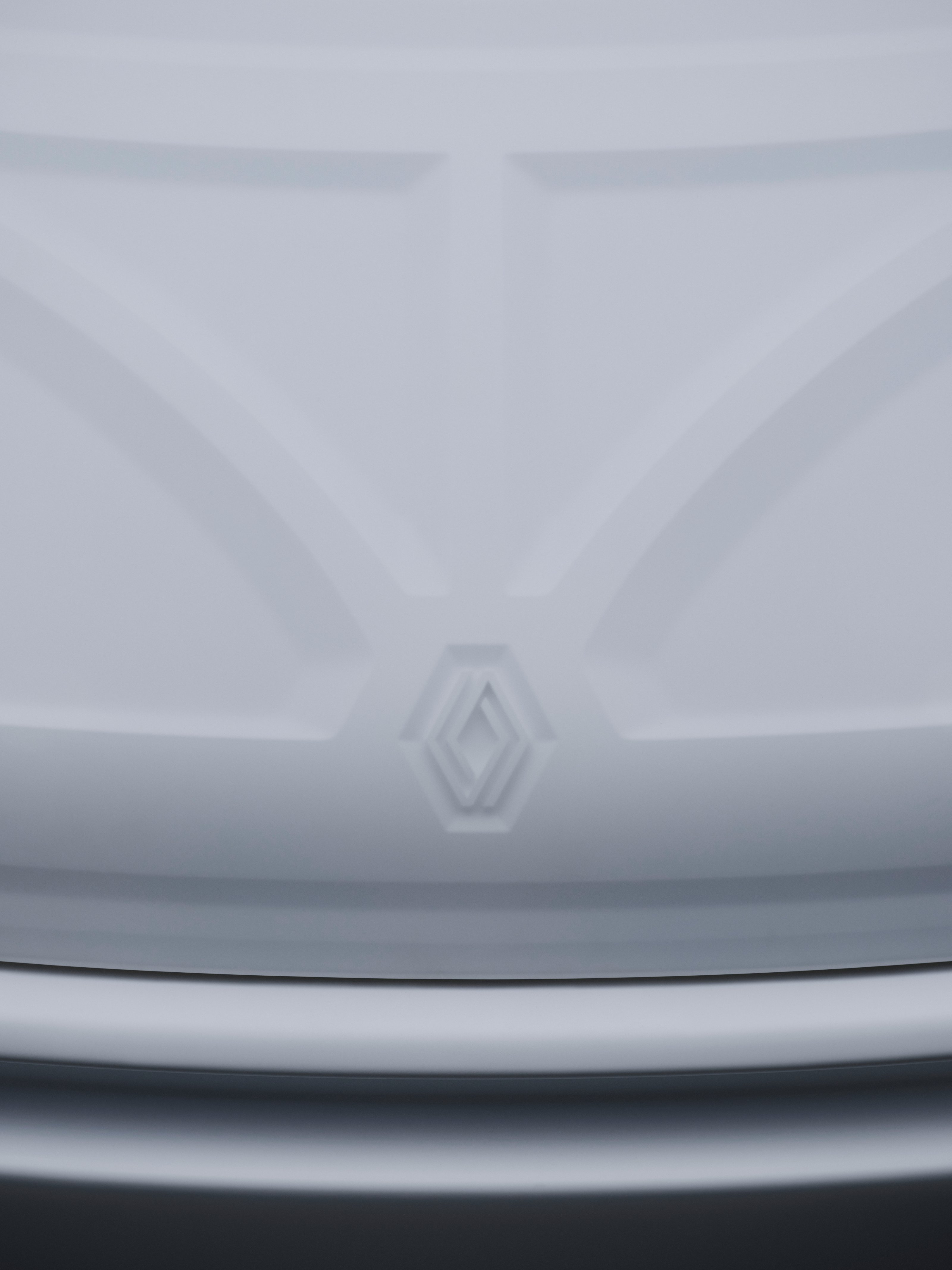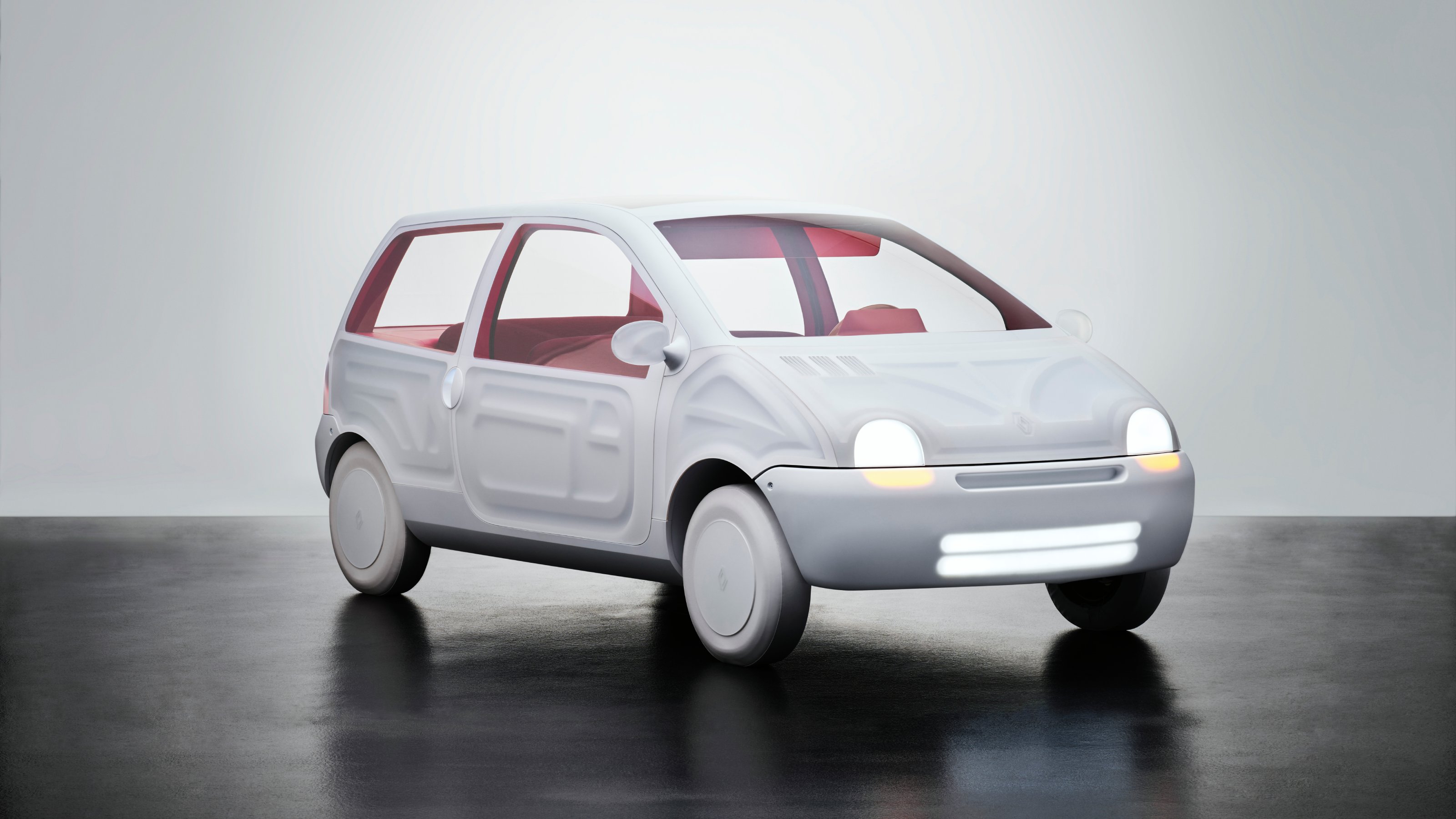
Hot on the heels of Mathieu Lehanneur’s Suite N°4, an interior redesign based on the classic Renault 4L and Pierre Gonalons’ Renault 5 Diamant, the manufacturer has turned to another cutting-edge artist and designer to reimagine one of their more contemporary classic models.
Sabine Marcelis’ Renault Twingo
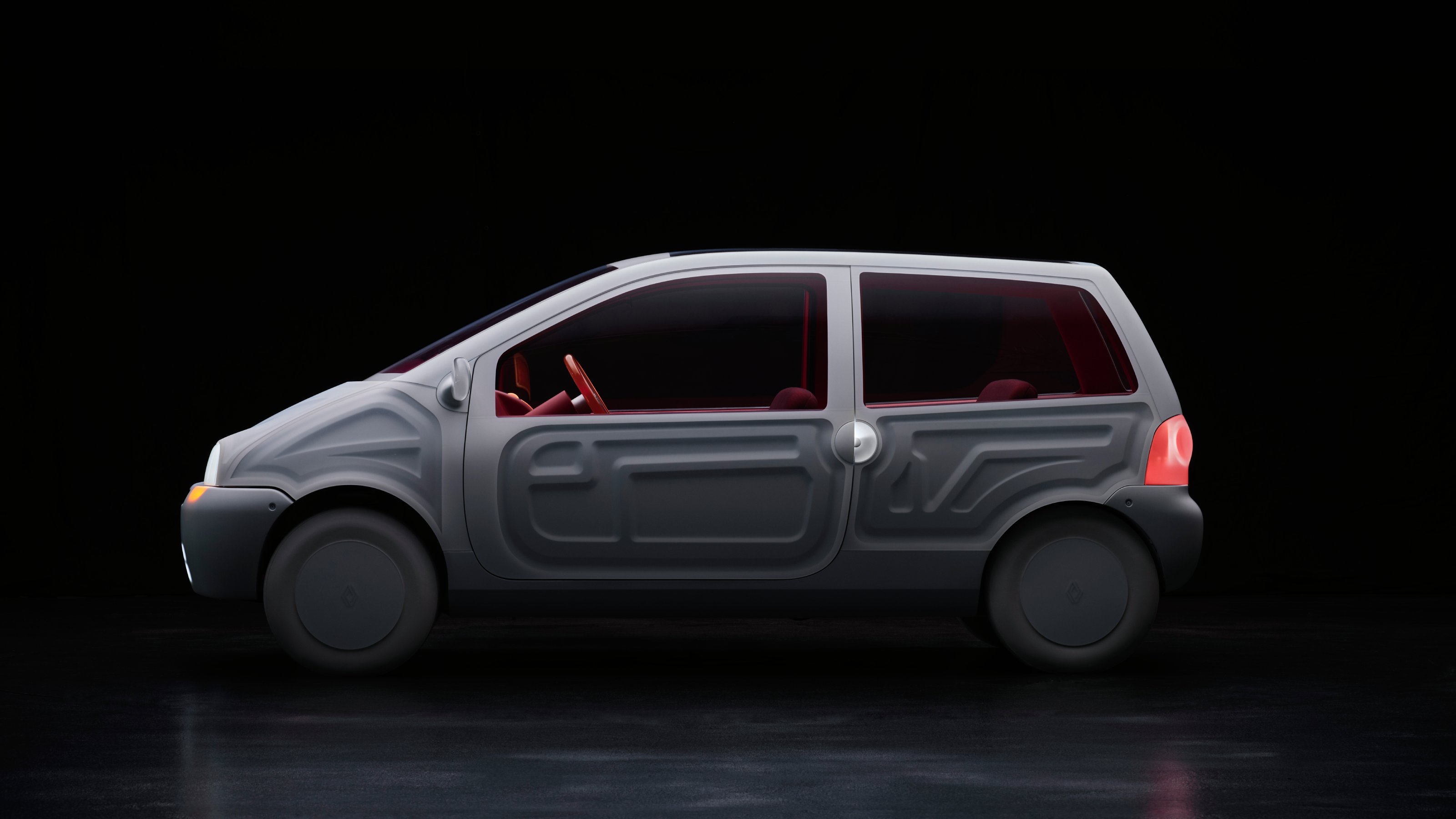
Sabine Marcelis has tackled the Twingo, the cult city car first introduced in the early 1990s when Patrick Le Quément was Renault’s legendary head of design. A micro-sized monobox design, the Twingo embodied an era of full-on Gallic automotive eccentricity (something the subsequent Twingo, which shared a platform with the Ford Ka, failed to replicate), a quality lost for generations.
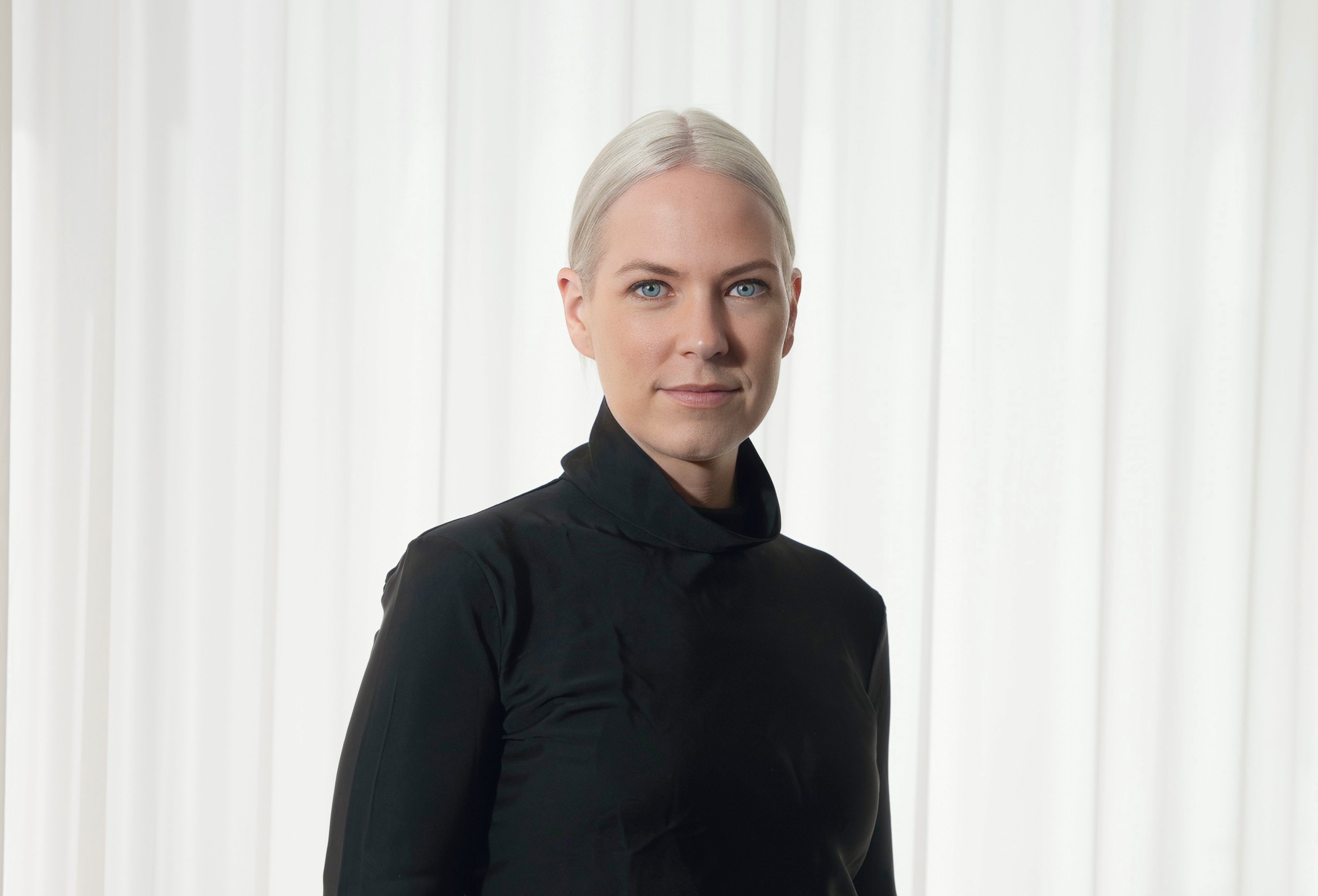
The Dutch designer has been drafted in to celebrate the Twingo’s 30th anniversary, reshaping and reimagining the compact machine as an electric concept that accentuates the single-volume silhouette with its distinctive semi-circular headlights and modular interior.
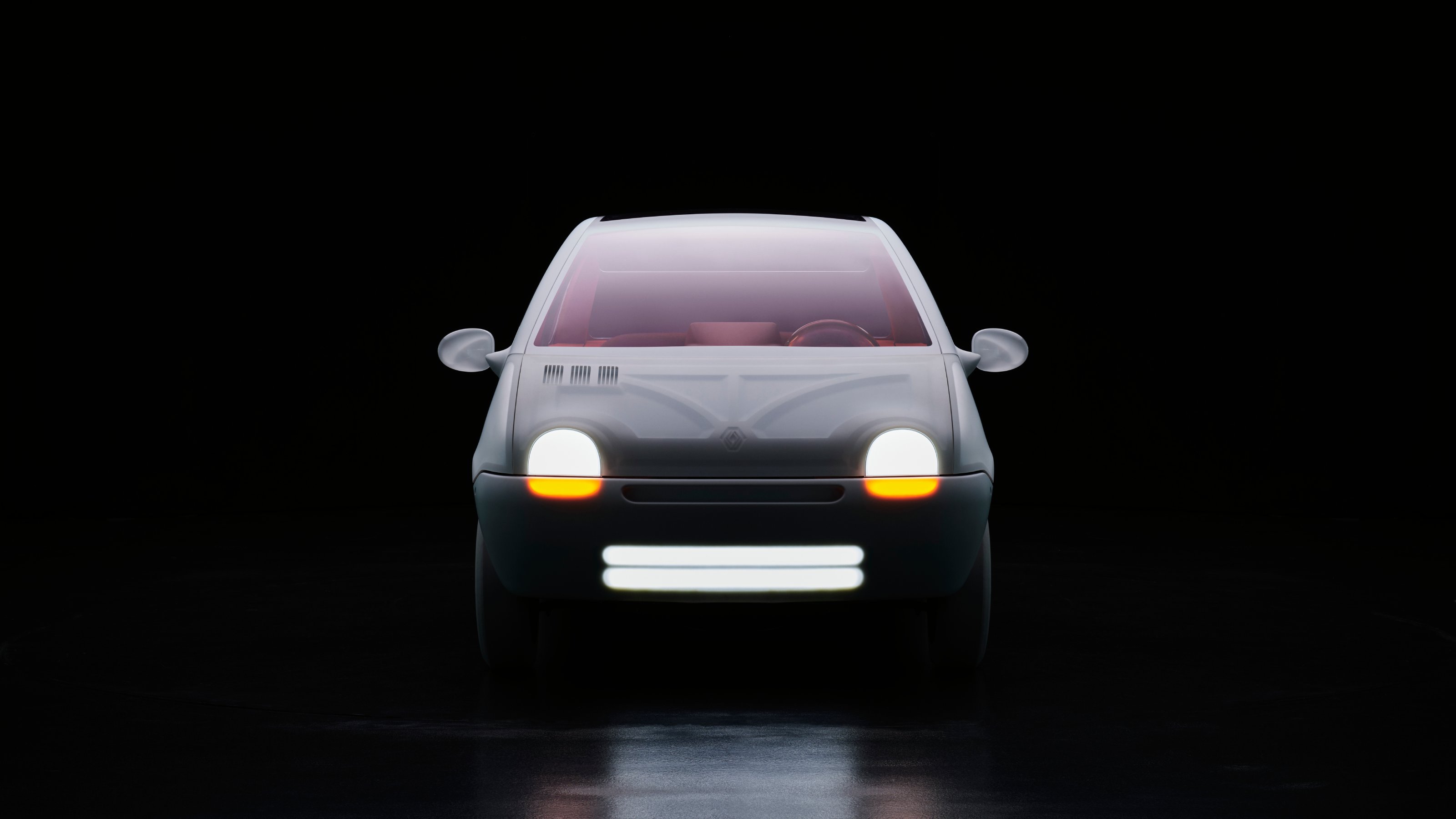
Transparency is the key to Marcelis’ approach, treating the body panels as if they were luminous and backlit, revealing the soft lines of their structural mouldings.
Inside, Marcelis’ ongoing experiments with light have been allowed free reign, with an interior broken down into solid volumes interspersed with translucent red details and a backlit dashboard.
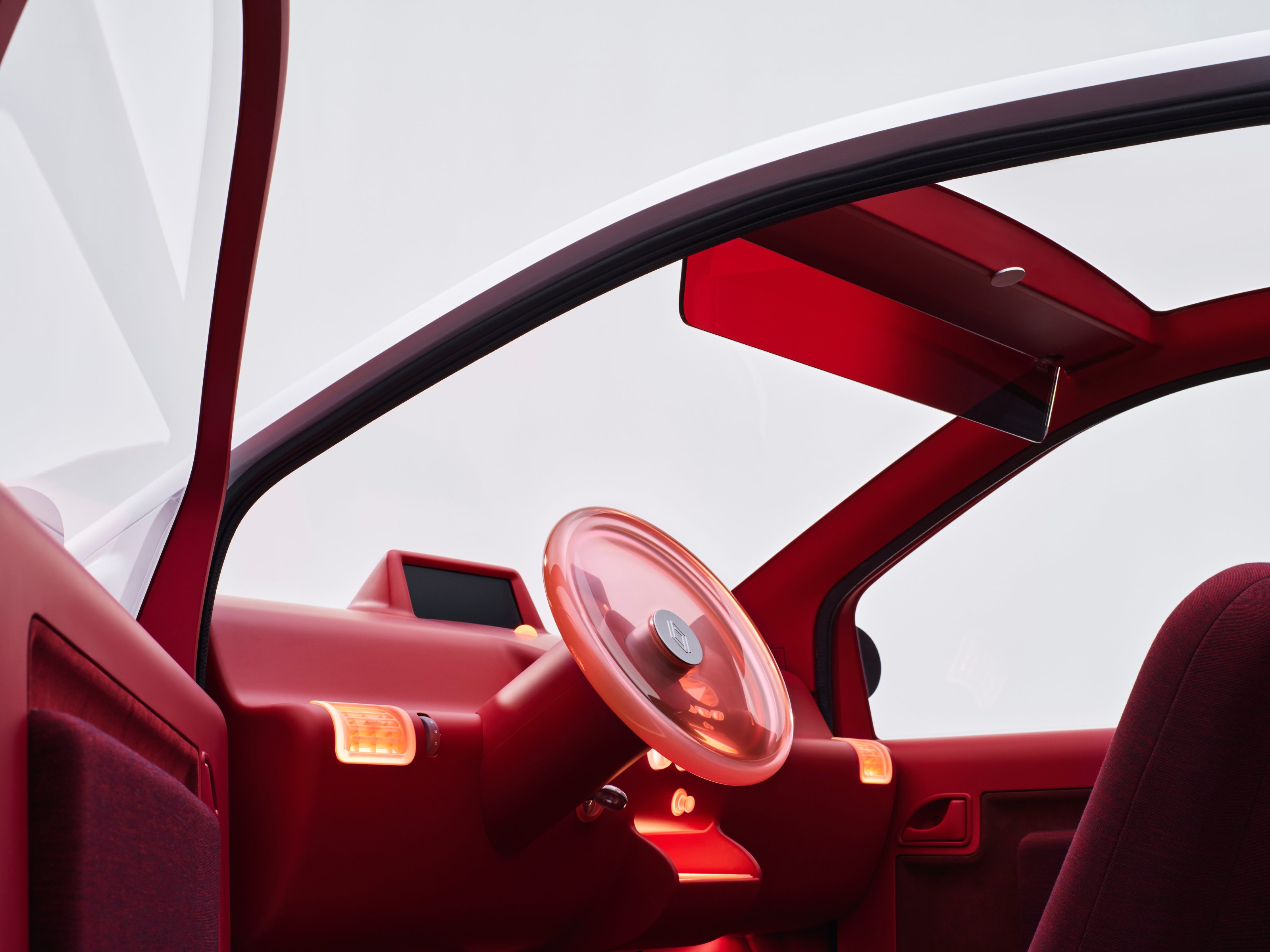
‘I love the quirky details of the Twingo – the “frog eyes” for example,’ says Marcelis. ‘My challenge was to elevate them without losing their unique identity and to bring all elements into a more luxurious realm, activated by light and materiality.’ The interior of the original car was exceptionally spacious, especially by today’s standards, despite its ultra-compact footprint. ‘It was a fantastic opportunity, and a new field of exploration for me, as I'd never designed a car before,’ the designer continues. ‘Working on such an iconic and popular car was a real challenge, especially given the scale of the project.’
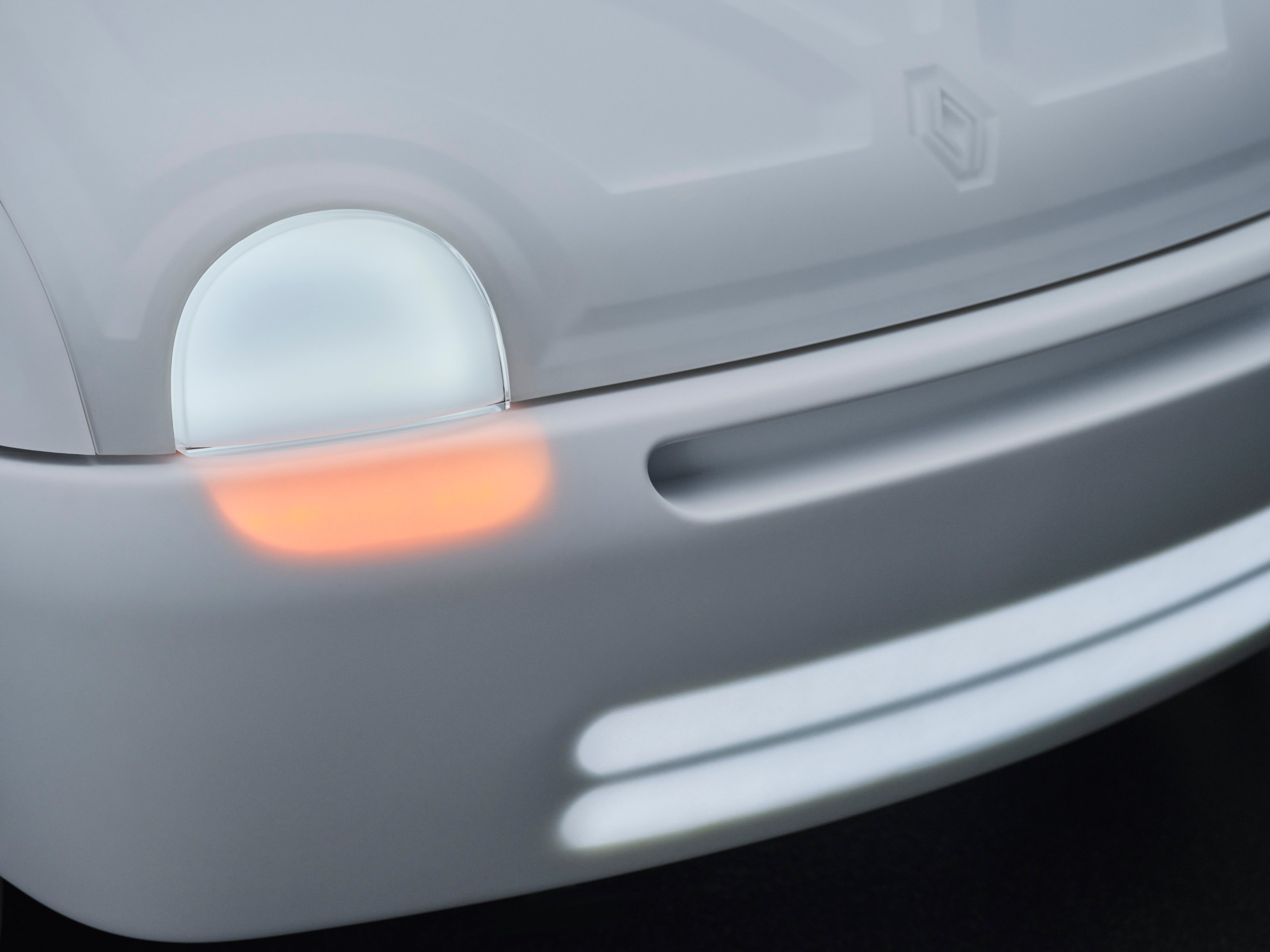
Renault describes the collaboration as ‘unique and unexpected’, preserving the best qualities of this diminutive machine without compromising Marcelis’ own artistic vision. By fitting the concept with an electric motor (the Twingo debuted with Renault’s venerable Cléon-Fonte petrol engine, a design that dated back to the early 1960s), the company has aligned one of its most iconic nameplates with the brand’s ongoing quest for electrification.
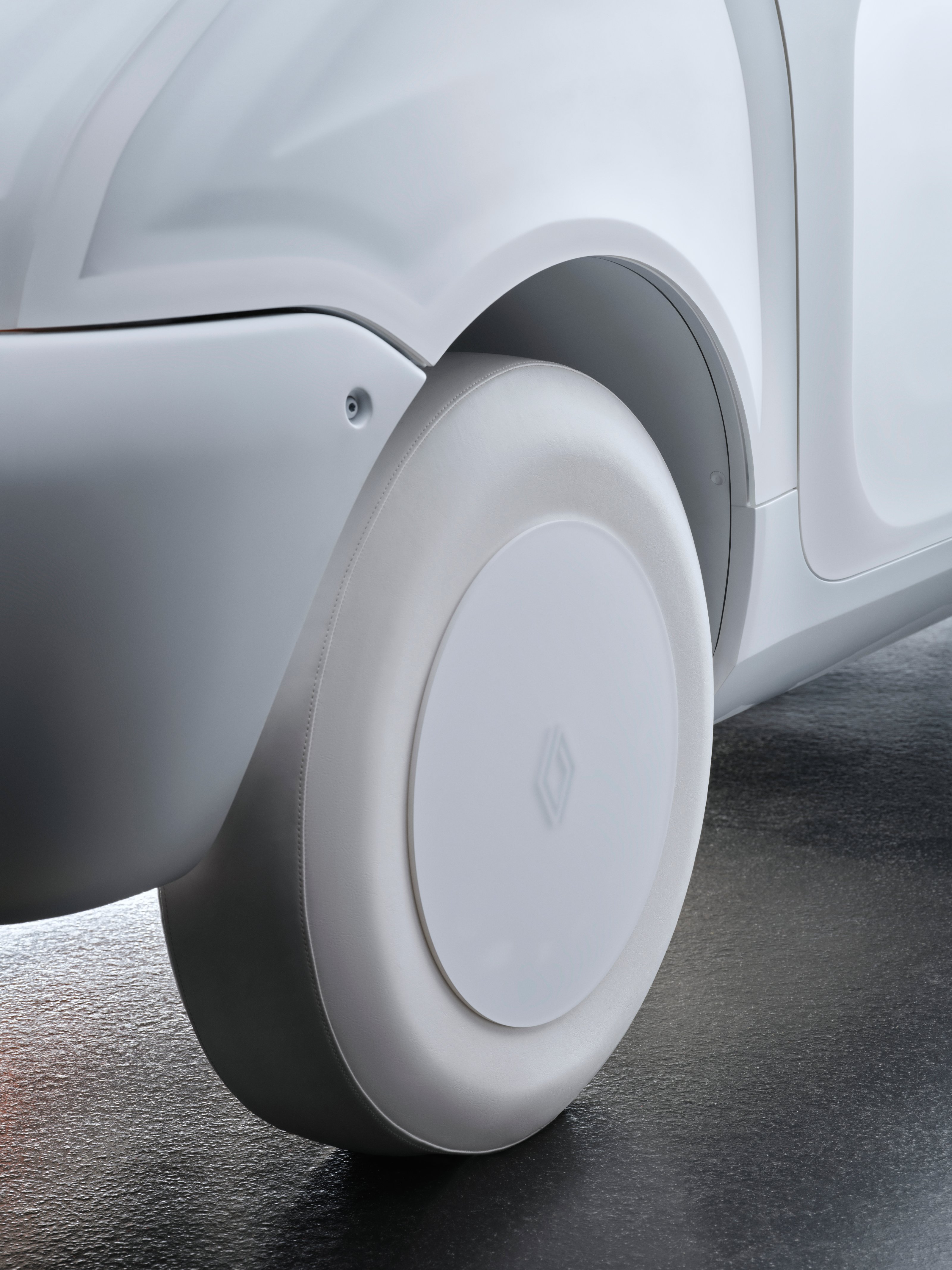
‘[I wanted to] strip elements back to their essence and push the theme of mono-materiality even further by turning some elements into mono-elements, like the sunshade and front seats, which have been turned into singular elements,’ Marcelis explains. ‘And the body and windows are also all one single materiality.’
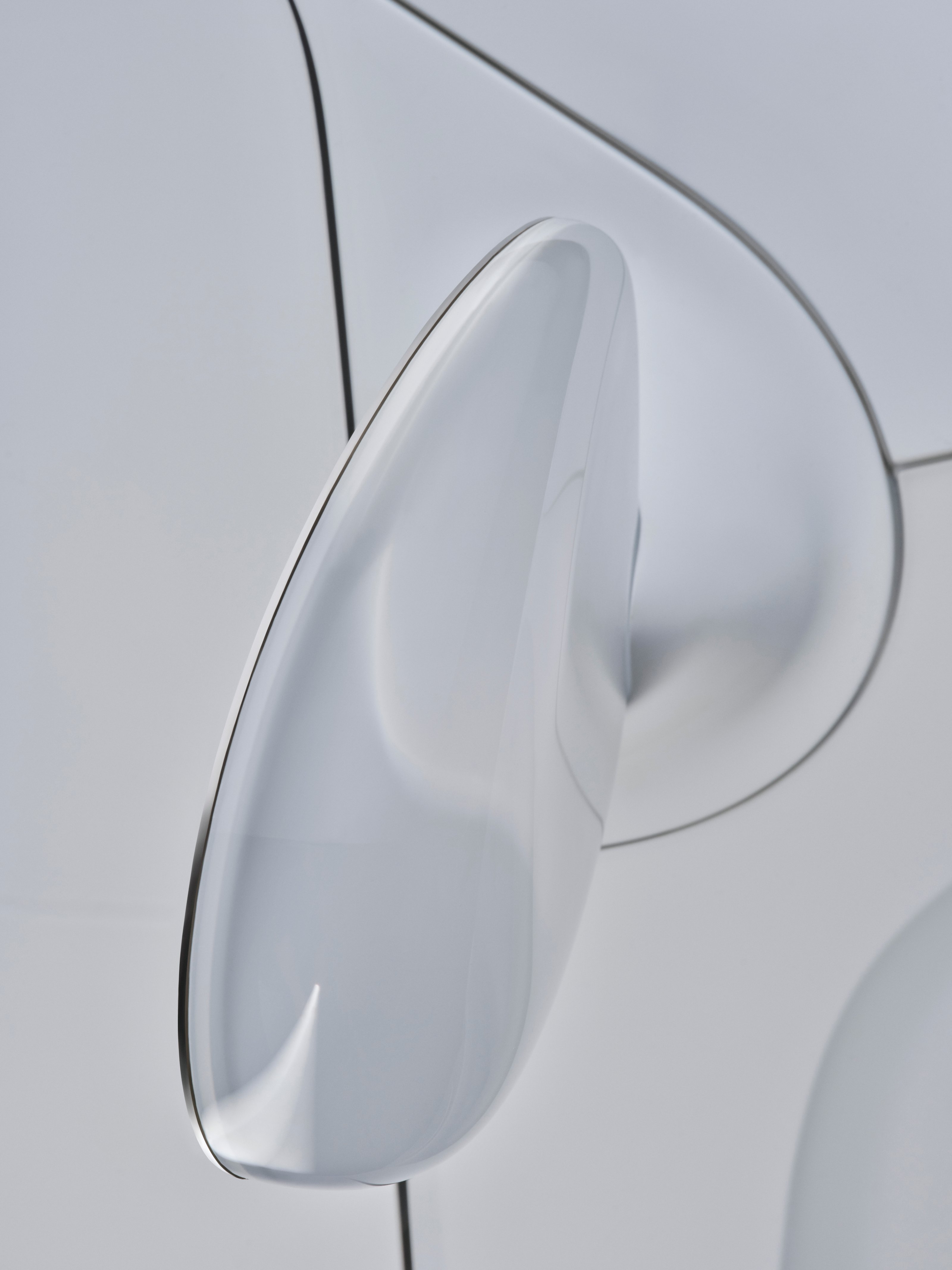
François Farion, Renault’s director of design, innovation and sustainability, describes it as a ‘carte blanche programme’.
‘From the beginning, the role of project management was not to intervene in the designer’s view of the Twingo, but to provide automotive background, and try to make everything Sabine designed possible,’ he says. ‘We wanted to create an object that would still be a car: it is electric; it is not road-legal but can be driven; the incredible steering-wheel works, even if you hit a curb (which we did to test the robustness of the prototype!).’
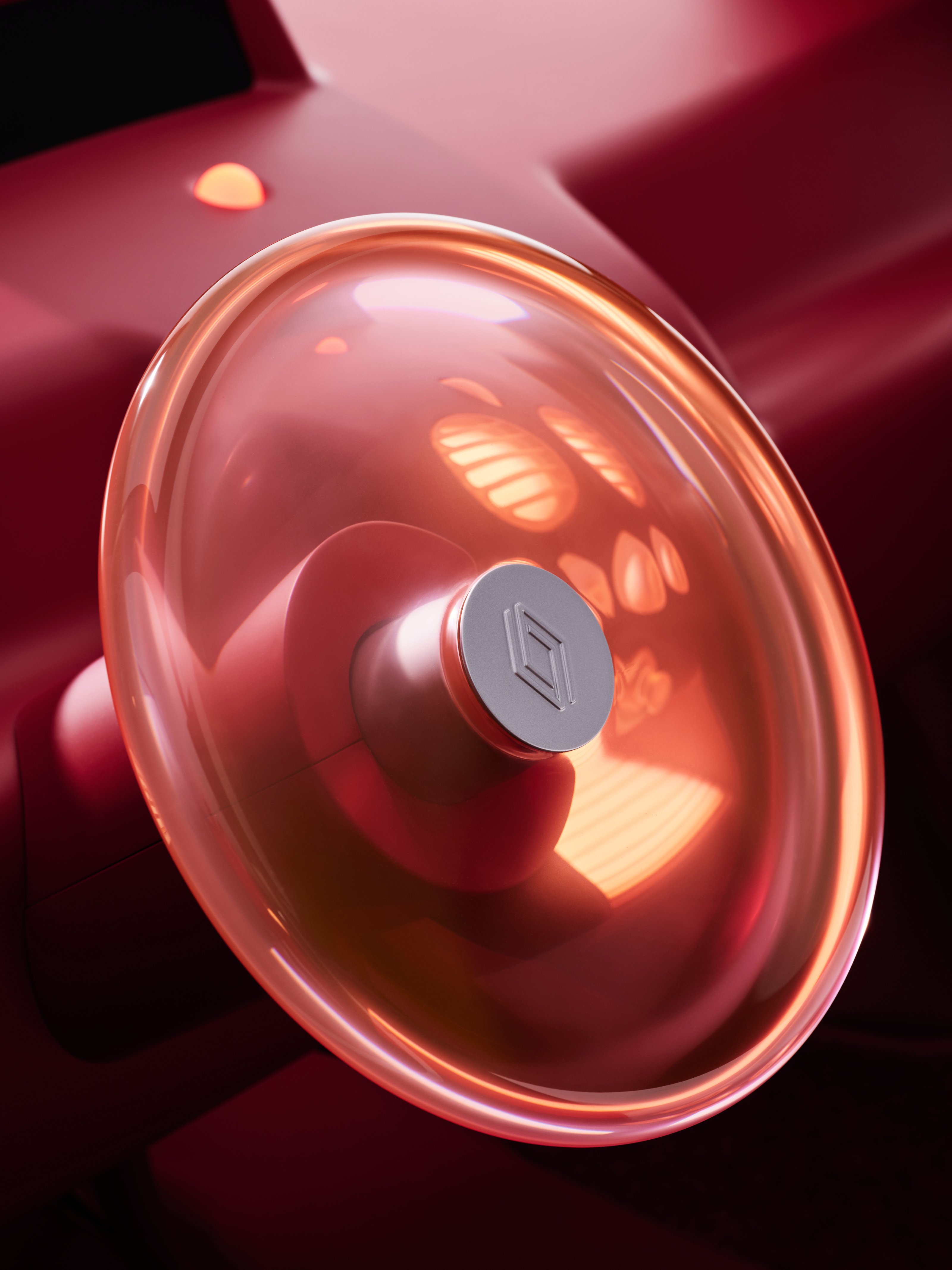
Above all, Sabine Marcelis has stayed faithful to the overall spirit of the Twingo, even as she has transformed its materiality and functional appearance. ‘It has the lines and proportions that remind people of the original, iconic silhouette,’ Farion says, ‘lines which maximise the feeling of space. Sabine has not only embraced this but enhanced it through her work on structure/transparency, and incredible interior purity/simplicity.’
